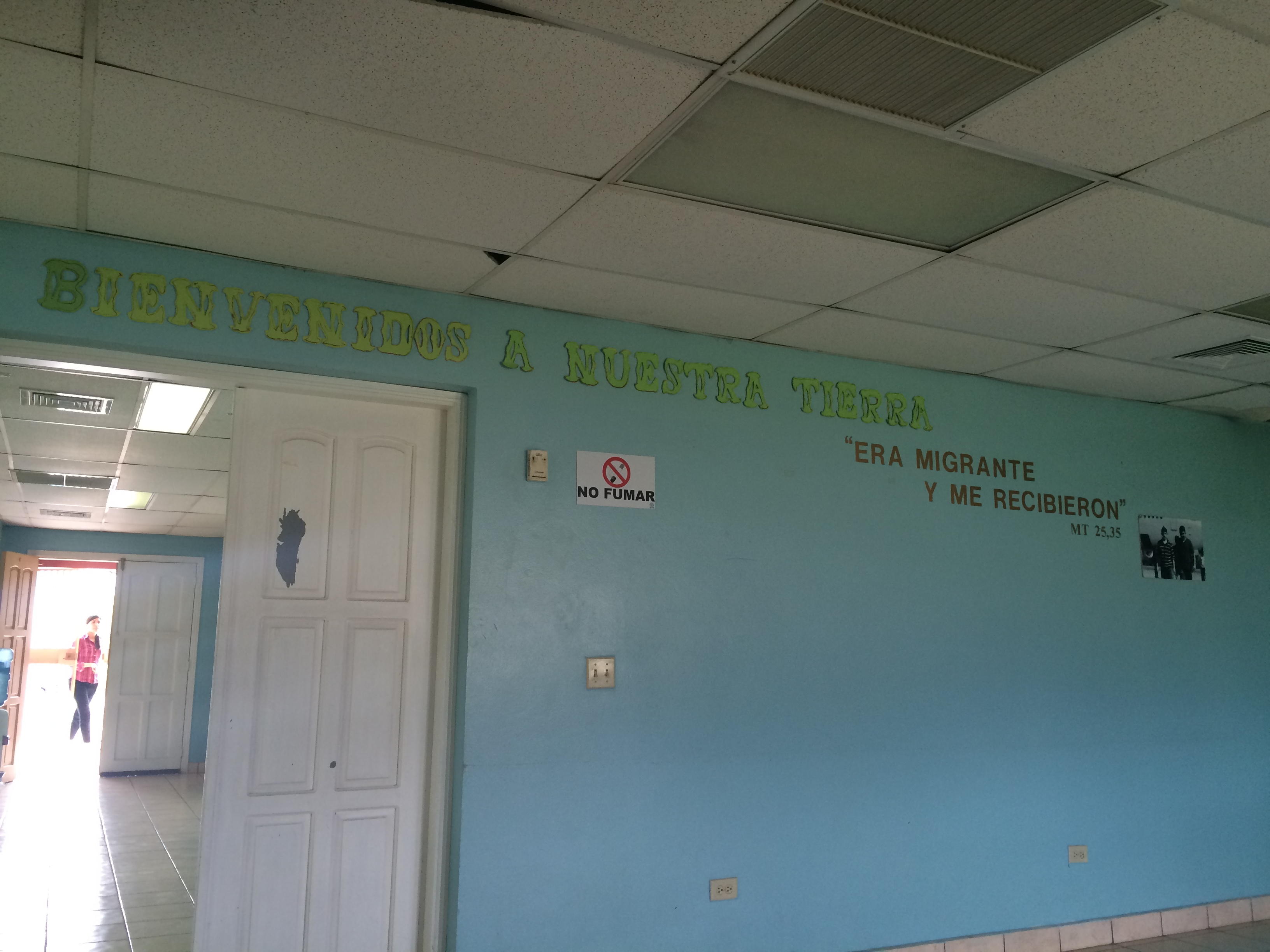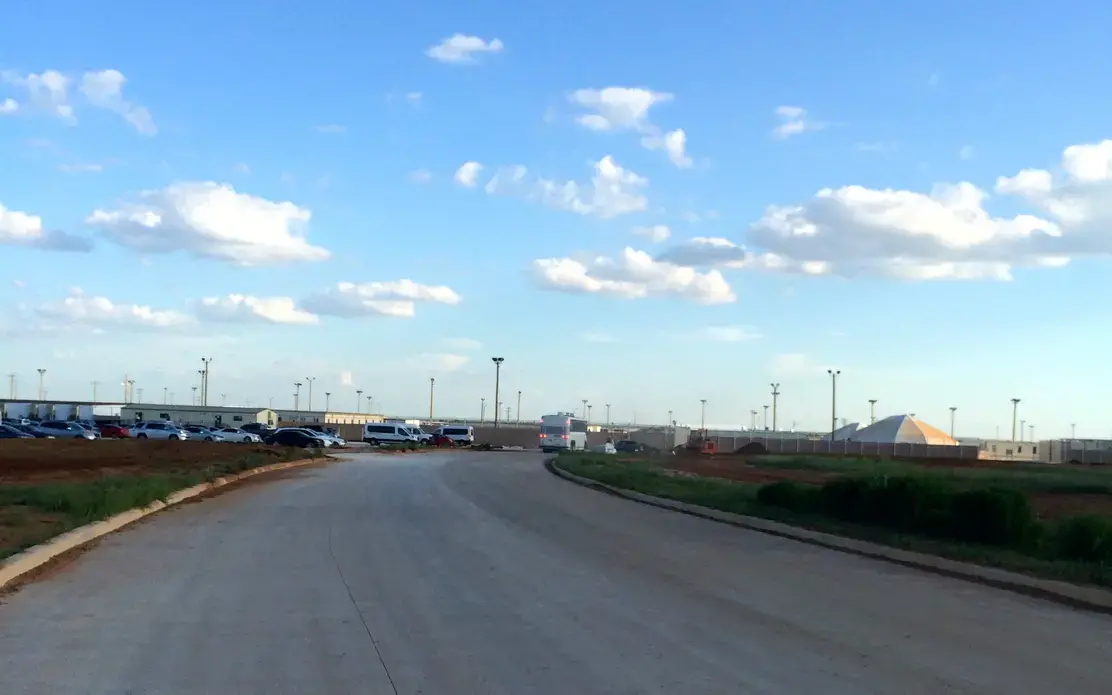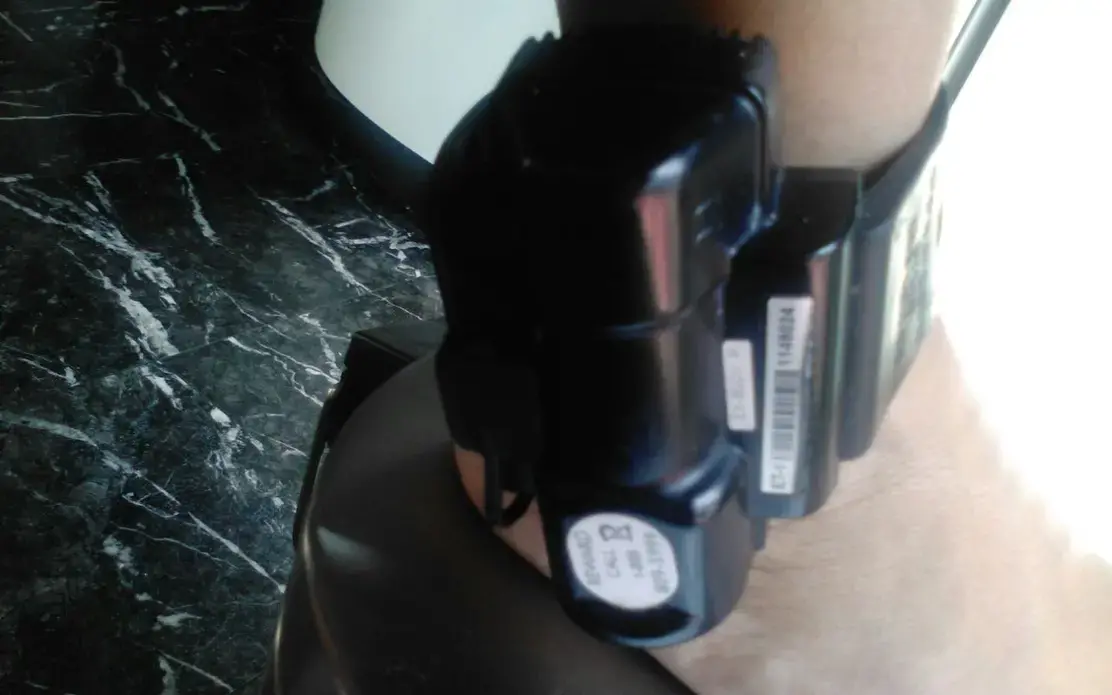HUNTINGTON, N.Y. — On a recent afternoon, Grace, a 33-year-old mother from El Salvador, sat on a bench inside the train station in this Long Island town, crossed her ankle over her knee, carefully rolled up the cuff of her flared jeans and pointed to the black plastic fist-size object strapped to her ankle. A tiny green light flashed, indicating that the device was charged.
"I don't want anyone to see it," she said. "People don't understand. They look at it and think, 'What did you do?'"
After spending nearly 14 months in immigration detention centers in New Mexico and Texas, Grace and her 14-year-old daughter moved to Long Island in September. They are part of a growing population of undocumented immigrant families, including more than 550 in the New York area, who have been released after a federal judge ruled that the Obama administration's detention procedures violated a longstanding court settlement involving the housing of children in federal immigration custody.
The decision by Judge Dolly M. Gee called for the detainees' swift release and, though the government has appealed the ruling, the number of undocumented immigrants held in family detention has dwindled significantly.
Most of the women detained have been released on the condition that they wear ankle monitors, or what the families call "grilletes," Spanish for shackles — GPS devices typically used to track criminals and increasingly used as a tool to track undocumented immigrants who are fighting deportation orders.
Grace was outfitted with an ankle bracelet when she was released from the South Texas Family Residential Center in the small oil town of Dilley, 75 miles south of San Antonio. Twelve days later she reported to 26 Federal Plaza in Lower Manhattan, where an immigration officer informed her of the monitoring process ahead and what to expect at court hearings, among other things.
Federal officials say that using ankle monitors is an economical alternative to detention. While holding a detainee in Dilley costs an estimated $296 a day, an ankle monitor costs about $4.50 daily. The number of detainees in Dilley has fallen drastically, from about 2,100 in the summer to 648 last week. The monitors "augment our border control efforts," said Bryan Cox, a spokesman for Immigration and Customs Enforcement. Their use is part of what the agency calls its Intensive Supervision Appearance Program.
But some advocates say the monitors are not only stigmatizing, but also unnecessary. According to statistics released this year by a division of the Department of Homeland Security, nearly 90 percent of detained families expressing fear of returning to their home countries passed an initial screening for asylum eligibility. Now that those families are free to make their cases in the immigration court system, they have "every incentive" to attend their hearings, said Elora Mukherjee, a professor at Columbia Law School who represents families in Dilley.
"Ankle monitors are appropriate for certain populations," Ms. Mukherjee said. "For felons accused of violent crimes, it might make sense to follow where they are going, who they are communicating with. We're dealing with a totally different population — the victims of violence, vulnerable trauma survivors who have gone through so much and don't need a physical reminder of what they've been through."
Grace, who did not want her full name disclosed because of her immigration status, showed a photo of her ankle with the monitor off, marked by a scabbed, red blister.
"It's like they make us free, but not totally free. It's the same psychological game as detention," Grace said. "They aren't freeing us totally. It's, 'If you break a rule, if you don't tell us you're leaving, we'll put you in detention again,'" she said. Worse, it is a reminder of deportation. She had been deported once before.
In 2007, Grace left El Salvador with her daughter, fleeing extortion and death threats by a notoriously brutal gang. After being apprehended near the border, they were held at a detention center in Taylor, Tex., which was used to hold mothers and children until 2009, when the Obama administration stopped the large-scale detention of families before resuming the practice last year.
Grace and her daughter were soon deported. "But they knew where we were," she said, referring to the gang. "They are everywhere in El Salvador." Single mothers in Central America are particularly vulnerable to gang violence, and the extortion Grace faced intensified. El Salvador grew increasingly violent, with one of the world's highest homicide rates. In July 2014, Grace and her daughter fled again. Her husband had fled El Salvador in 2006, and was living on Long Island.
But she was caught near the border again and held first at a temporary 700-bed center in Artesia, N.M., for mothers crossing with children, then at a complex in Karnes City, Tex., before being taken to the Dilley center, where they would spend the next eight and a half months.
"There was always the threat of deportation, at all moments," she said, as she started to cry. "We always resisted. Only God knows how many tears there were."
Grace and four other mothers were released from Dilley on the same day, all with ankle monitors, which are typically required to be worn for three months before supervision is scaled back.
They celebrate their newfound freedom, but they lament the stigma of the monitors.
"The other day I went to a restaurant," said a single mother from Ecuador, who was released from the Dilley center a month before Grace and now lives in Queens. "They looked at me and asked me what that was." She said she tried to explain her situation, but people in the restaurant did not understand. At home, her 12-year-old son repeated the message that the monitor, in Spanish, emits: "Charge the unit. Charge the unit."
Five years ago, she had been forced into a sex-trafficking ring that operated between Ecuador, Colombia and Peru, said the mother, who requested anonymity because of fear of her traffickers. She escaped in 2012, fled north, and spent several weeks in a detention center before being released and sent to New York. After learning that her son, whom she had left with a sister, was in danger from gangs, she returned to Ecuador in 2014. Together they fled. When they reached northern Mexico, they said, they were held hostage for two months in a warehouse controlled by a drug cartel.
After paying a ransom, they were freed and crossed into Texas, but were apprehended by border patrol officers and taken to Dilley, where they spent the next two and a half months. "I cannot return to my country, because of my problems," the mother said. "They will kill me."
Her life in Queens is quiet, and safe. After dropping her son at school and before English classes in the afternoon, she takes her son's dog on long walks, even though the monitor gives her blisters. She feels as if Dilley followed her to Queens. "I'm outside, and that's what matters," she said. "No more tears," she repeated to herself. "I want to feel free, at ease."

Education Resource
Meet the Journalist: Emily Gogolak
In this project, journalist Emily Gogolak documents the stories of women and children deported from...










